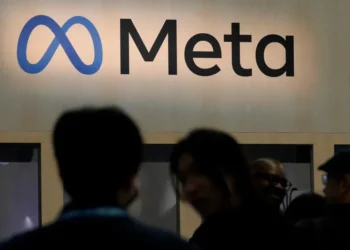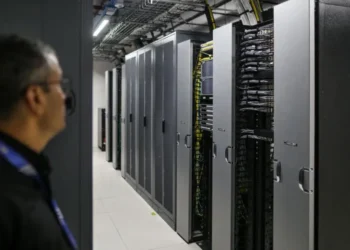Has China’s DeepSeek Changed the AI Landscape?
Published Time: 08-10-2025, 14:00 U.S. ET
In early 2025, the AI world was shaken by a sudden rise of DeepSeek-R1, a Chinese artificial intelligence app that rapidly climbed the U.S. app charts, challenging the dominance of American AI leaders like OpenAI’s ChatGPT. This unexpected development sparked a dramatic market reaction and prompted renewed scrutiny of the ongoing U.S.-China rivalry in artificial intelligence.
The Market Shock: DeepSeek’s Unexpected Arrival
Just days after President Donald Trump began his second term, DeepSeek-R1 surged to become the most downloaded free app on Apple’s U.S. store. The company behind DeepSeek claimed their chatbot rivaled ChatGPT’s capabilities but was developed at a fraction of the cost.
This announcement sent shockwaves through Silicon Valley. Nvidia, a major chip supplier crucial to AI infrastructure, saw its stock drop by $600 billion in market value—the largest one-day loss for a single stock in U.S. history. Other AI-exposed tech stocks also fell as investors reassessed the competitive landscape.
DeepSeek’s emergence disrupted the widely held belief that the U.S. was far ahead in AI technology, signaling that China might be closing the gap faster than many expected.
Rethinking AI: Efficiency Over Size
For months after the launch, DeepSeek faded from headline news but remained active in the AI ecosystem. It challenged the prevailing notion championed by many U.S. AI leaders, including OpenAI CEO Sam Altman, that bigger and more resource-intensive models were the future.
Sid Sheth, CEO of AI chip startup d-Matrix, noted, “We were on a path where bigger was considered better… DeepSeek demonstrated that smarter engineering can deliver capable AI without massive infrastructure.”
Despite limited access to the most powerful chips and data centers, DeepSeek’s efficiency proved that smaller models could perform competitively, altering how the industry views AI development costs and scalability.
Data Privacy and Ongoing U.S. Concerns
When DeepSeek became popular, many U.S. companies banned employees from using it due to concerns over data security and privacy, fearing sensitive information might be accessible to Chinese authorities. Despite this, some Silicon Valley startups continue using DeepSeek to save costs, running it locally to protect data privacy.
Christopher Caen, CEO of Mill Pond Research, explained how users circumvent data risks by operating DeepSeek models on their own hardware, reducing the chance of data transmission to China.
The U.S.-China AI Rivalry Intensifies
DeepSeek’s breakthrough was a wake-up call for the U.S. AI industry. Until then, China was perceived as trailing the West, especially in large language models (LLMs) that predict text sequences. DeepSeek claimed it developed a top-tier LLM for just $5.6 million, compared to OpenAI’s $5 billion investment in 2024 alone.
Wendy Chang, policy analyst at the Mercator Institute for China Studies, remarked, “DeepSeek revealed the competitiveness of China’s AI landscape to the world.” The Trump administration and American tech giants have since emphasized the critical need to maintain U.S. leadership in AI, framing it as an issue of economic and national security.
DeepSeek Under U.S. Government Scrutiny
The U.S. government has raised concerns about DeepSeek’s connections to Chinese military and intelligence entities. A senior State Department official told the BBC that DeepSeek “has willingly provided, and will likely continue to provide, support to China’s military and intelligence operations.”
DeepSeek’s privacy policy confirms its servers operate within China, heightening worries over potential data access by the Chinese government. These concerns continue to complicate the app’s broader adoption in the U.S. and allied countries.
Impact on Industry Trends and AI Models
OpenAI recently released two free and open-source AI models, a move seen by some experts as influenced by DeepSeek’s success in proving smaller, efficient models can be effective. Sid Sheth described this as a shift toward “right-sized models that are faster, cheaper, and ready to deploy at scale.”
However, major American AI firms continue investing heavily in large data centers and cutting-edge chips. OpenAI’s recent launch of GPT-5 was accompanied by increased computing resources, and companies like Meta have pledged billions toward AI development and talent acquisition.
Nvidia’s stock has rebounded, signaling investor confidence in the resource-intensive approach to AI.
Challenges Ahead for DeepSeek
Despite its initial success, DeepSeek now faces significant hurdles. Operational difficulties and fierce competition from established American and Chinese tech companies have slowed its momentum.
Marina Zhang, associate professor at the University of Technology Sydney, highlighted delays in DeepSeek’s next-generation model, DeepSeek-R2, citing chip shortages as a contributing factor.
Conclusion: A Temporary Shake-Up or Lasting Change?
DeepSeek’s emergence challenged long-standing assumptions about AI development and highlighted China’s growing role in this critical technology. It sparked important conversations about efficiency, cost, and national security in AI.
Yet, the industry’s return to larger models and increased investment in infrastructure suggests that the DeepSeek moment may have been a temporary disruption rather than a permanent shift.
The evolving AI landscape will continue to reflect this dynamic tension between innovation, efficiency, and geopolitical considerations as both the U.S. and China vie for leadership.
Sources: BBC – It shocked the market but has China’s DeepSeek changed AI?
This article was rewritten by JournosNews.com based on verified reporting from trusted sources. The content has been independently reviewed, fact-checked, and edited for accuracy, neutrality, tone, and global readability in accordance with Google News and AdSense standards.
All opinions, quotes, or statements from contributors, experts, or sourced organizations do not necessarily reflect the views of JournosNews.com. JournosNews.com maintains full editorial independence from any external funders, sponsors, or organizations.
Stay informed with JournosNews.com — your trusted source for verified global reporting and in-depth analysis. Follow us on Google News, BlueSky, and X for real-time updates.













